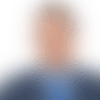Whether you're an experienced veteran with a wealth of football knowledge or a wet-behind-the-ears rookie who knows more about Michael Jackson than Steven Jackson, there are a number of rules that will assist you once your draft has concluded in that ever-important quest for a fantasy football championship. With the start of the regular season close at hand (first kick is Sept. 6!), we offer our list of five important guidelines that can help take you to the top of the mountain.
1. Know the schedule and set a lineup each week
This might seem like an obvious rule, but I can't tell you the number of times I've seen owners fail to set their lineups. Whether a player is injured or on a bye week, he needs to be removed as a starter in order to have the best possible chance at a win. Even if that means you need to start Arizona's No. 2 back or Cleveland's No. 3 receiver, at least there's a chance to see some points.
It's also important to remember that the NFL has altered their byes and schedules, so owners will have to be even more diligent with their lineups, not to mention their work on the waiver wire. Bye weeks start the weekend of Sept. 30 (Week 4) with the normal four teams out of action, but six teams will have byes Oct. 14-15 (Week 6 -- Buffalo, Denver, Detroit, Indianapolis, Pittsburgh, San Francisco). The four-team format returns on Oct. 21-22 (Week 7), but another six teams will have byes on Oct. 28-29 (Week 8 -- Arizona, Atlanta, Baltimore, Dallas, Kansas City, Seattle).
Bye weeks return to normal with four teams off Nov. 4-5 (Week 9) and Nov. 11-12 (Week 10). After the regular-season opener in Indianapolis between the Colts and New Orleans Saints, there won't be another Thursday night game until Nov. 22 on Thanksgiving (Week 11). And rather than the normal two afternoon contests that will kick off in Detroit and Dallas, Thanksgiving will once again have a third game that will air on the NFL Network (Indianapolis at Atlanta, 8 p.m. EST).
After Thanksgiving's three contests, there will be a Thursday night game every week until the final week of the regular season. A Saturday night contest will also be added starting on Dec. 15 (Week 15), after which point Saturday contests will remain the norm for the rest of the season.
2. Use the waiver wire and check the transactions report
It happens all the time and it will no doubt happen again: Players that open the season on the waiver wire will become prominent starters and help lead owners to a fantasy football title.
Like life in general, the NFL season is unpredictable. Injuries will occur, depth charts will dance around and players who where thought to have little or no value will emerge into serious assets. In 2003, Anquan Boldin came out of nowhere to record 101 receptions, 1,377 yards and eight touchdowns. He wasn't drafted in most cases but became a viable No. 1 fantasy wideout for owners who were active on the waiver wire. In 2005, former practice-squad player Samkon Gado became the featured back in Green Bay after injuries landed Ahman Green, Najeh Davenport and Tony Fisher on the sidelines. He went on to outscore LaDainian Tomlinson in a four-week stretch. Vince Young, Maurice Jones-Drew and Mike Furrey are a few of last season's prime waiver gems.
In leagues that run waivers and don't utilize a first-come, first-served rule, owners should take the time each Tuesday to check out the previous week's top performers and consider potential moves to improve their rosters. Also be certain to keep tabs on the transactions report, because some owners could be quick to release a valuable player who might start the season off slow. Owners who are active on the waiver wire should also remember not to release a viable starter for someone who might turn into a one-week wonder. The regret for such a move could be terrible if that player is added to another team and helps that owner land a postseason berth. Instead, it's advised to take a chance on someone who had a solid week or is released at the expense of a third quarterback, a fifth wide receiver or a second tight end, kicker or defense.
3. Make trades from depth to improve at weaker positions
The draft is important to success in the world of fantasy football, but the team you've drafted won't be the team you finish the season with in most cases. Those owners who did have a solid draft or were successful on the waiver wire will sometimes find themselves with an abundance of depth at a certain position, and that depth should be utilized in trades during the regular season.
For example, an owner who hoards featured backs in the draft or was able to add the likes of Jones-Drew or Travis Henry off waivers last season should have had a nice number of backfield options. However, if that same owner has less talent at another position -- say wide receivers for this hypothetical -- he/she should then look to deal a running back to improve at wide receiver.
It's also important to know the opposition and their rosters in order to make the most educated trade offers. An owner who has a decent number of running backs probably won't want to add another one via trade, but someone whose backfield falters in the first few weeks of the season could be in dire straits at the position will be more desperate to improve and make a trade. Also, it doesn't hurt to know what teams or players the opposition roots for when it's time to make trades. For example, an owner who has a ton of wide receivers -- one of which is Plaxico Burress -- might want to offer Burress to an owner who needs a wideout and is a known fan of the New York Giants. Sometimes people make decisions with their hearts and not their heads, and the clever owner will use that sort of knowledge to his/her advantage.
Remember, all's fair in love and fantasy football...
4. Remember to stick with your stud players in most cases.
Sometimes owners panic when their studs fail to meet expectations at the start of the regular season. Those failures turn to doubt, and that doubt makes people question whether or not to keep that stud active on a week-to-week basis. The perfect example of this particular situation last season was Chad Johnson. Ocho Cinco was more like Ocho Stinko through his first eight contests, but he finished the season on absolute fire and even led the NFL in receiving yards.
Of course, there are a few limited exceptions to this rule. Once it became clear that LaMont Jordan was having no success in the new Raiders offense, then owners needed to consider a switch if another option is available. But in most cases, it's advised to stick with the studs you've drafted. Remember that their coaches won't quit on them, and neither should you.
5. When in doubt, be confident and utilize the best matchups
Sometimes fantasy football can cause owners to break out the Excedrin when it comes to make those difficult lineup decisions, but the best course of action is to know the matchups and make an educated decision. Outside of the studs that should remain active most of the time, there will be countless occurrences when owners will have to choose between two players with similar value as a starter. Unless you're found a crystal ball or have an audience with Nostradamus, its best to examine the matchups, make a choice based on the numbers and stick with it. Let's pretend that an owner has to choose between two quarterbacks with similar value like Matt Leinart and Tony Romo. In that week, Leinart faces a formidable Baltimore defense while Romo goes up against a vulnerable Lions defense. Based on the level of opposition, Romo should start. Even if he fails to produce better numbers than Leinart, you still make the most educated choice.




